Help
Speaking a foreign language like a native speaker is the dream for many language learners. Unfortunately, not many learners have been able to achieve this goal. We know it’s possible to reach such a level of fluency because there are learners out there who have.
The two questions I’ll explore in today’s article are the following:
(1) What is native-like fluency?
(2) How do we achieve native-like fluency in a foreign language ?
What is native like fluency?
Before answering that question we have to ask another: how do we measure language competence? We don’t have to think about it for too long to realize it’s complicated.
Can summarise information from different spoken and written sources, reconstructing arguments and accounts in a coherent presentation.
Can express him/herself spontaneously, very fluently and precisely, differentiating finer shades of meaning even in the most complex situations.
(Taken from the Wikipedia page:Common European Framework of Reference for Languages)
Think about it, a lot of native speakers don’t reach this level of competence in their native language… therefore, comparing a level C2 to native-like fluency is misleading. I mentioned earlier that I’ve managed to pass the C2 exam for 4 languages, HOWEVER, despite reaching this level of competence I can say that I feel a lot closer to native-like fluency in some languages than others. I’ll explain why that is shortly, but first I want to introduce “the language core”, which is at the centre of my philosophy for language learning:
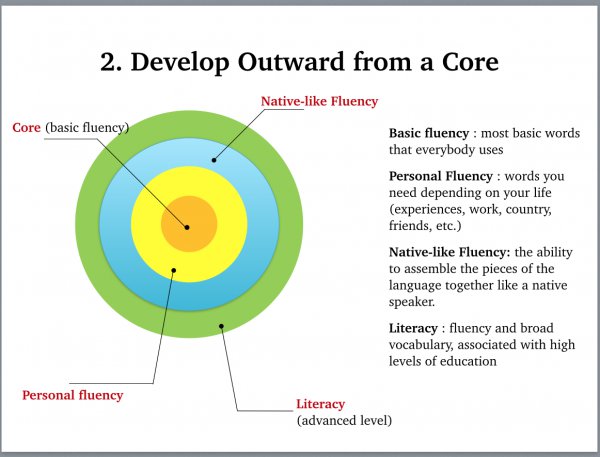
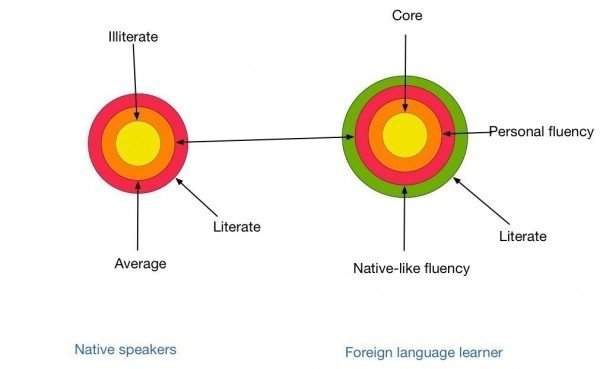
Native like fluency
The competence we develop in a language is a result of a number of different factors. However, what all natives have in common is the fact that they are exposed to their native languages as they grow up in a micro and macro environment. This is a way to describe how they interact with languages.
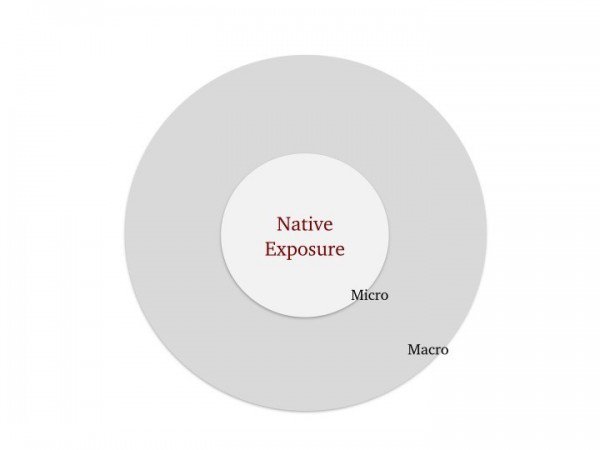
Many natives speak live under these conditions without the necessity to develop literacy (C2) in the way it’s defined in the European framework for language competence.
I’ll use my French and German as examples:
Despite having both German and French at a level C2, my French is A LOT closer to native like fluency. And yet, I’ve read many, many more books and magazines in German than I have in French, and I’ve written many more essays and letters in German than I have in French. What makes my French a lot closer to native-like fluency is the fact that I’ve LIVED the language and spent more time INTERACTING with French natives than I have with Germans. I’ve lived with and used French in both micro and macro environments, and this combination makes all the difference.
I work as a language coach and I’ve trained hundreds of students all over the world, and I can share that the level of success my students attain is always in direct correlation to the way they live their lives through the languages they learn.
Related topics:
- 5 CRAZY WAYS TO GET OVER SHYNESS IMMEDIATELY, NO DRINK/DRUGS REQUIRED
- How to stay motivated when learning a new language
- How can I avoid confusing words from different languages?
Comments
 4
4
 3
3
 1
1
 1
All
1
All
| May 2015 je pense que si vous voulez parler une langue il faut traduire toute vos connaissance en cette langue et de se concentrer sur la conjugaison |
 English
English
GEZIADIRINIJuly 2017 Oui vous avez raison. Mon professeur m'a dit toujours : "ajoutez minimum un vocabulaire par jour!" (et j'apprends le français depuis l'année 2000 jusqu'à maintenant) Wow! Il y a beaucoup de vocabulaire!
 | GEZIADIRINIJuly 2017 This is a great article! I totaly agree with "a lot of native speakers (maybe) don't reach level C2". In Indonesia, many people will not pass the Indonesian language test (because they only use their mother tongue in daily activity). I think the native like speaker is your ability to impress the native it self by your excellence skill in using their language (coherent presentation and pronounciation) and your deep sense of that language. |
 English
English | coolguy43June 2015 That was a really nice lesson in how to learn english like native. Kind of reminded me of my lessons at Preply at http://preply.com/en/skype/english-native-speakers. |
 English
English | kazgirlFebruary 2015 Yes, may be but living in native-speaking country helps people to develop and improve the learnin language. But in my practice working as a teacher I know and this has been approved that there is the passive and active vocabulary. And Students mostly used the active vocabulary in any kind of situation. |
 English
English
vincentFebruary 2015 Thanks for your comment
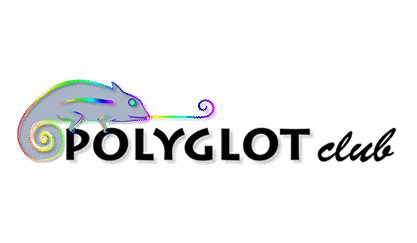









































 Source: Luca Lampariello
Source: Luca Lampariello